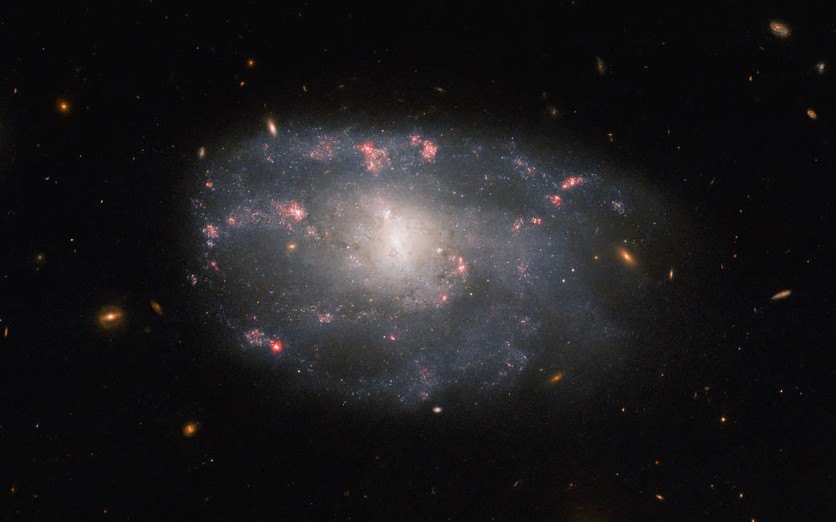The NASA/ESA Hubble Space Telescope has captured a stunning image of the irregular spiral galaxy NGC 5486, located in the constellation Ursa Major, hanging against a backdrop of distant galaxies.
The tenuous disk of the galaxy is threaded with pink wisps of star formation, which contrast with the galaxy's bright core, according to NASA.

Although NGC 5486 has meandering spiral arms, it is located near the Pinwheel Galaxy, one of the best-known examples of a "grand design" spiral galaxy with prominent and well-defined spiral arms.
In 2006, the Hubble Space Telescope captured an image of the Pinwheel Galaxy, which at the time was the largest and most detailed photograph of a spiral galaxy ever taken with Hubble.
Irregular Spiral Galaxy
An irregular spiral galaxy is a type of galaxy that does not have a well-defined spiral structure, as opposed to the more common spiral galaxies.
Irregular spirals are often characterized by an irregular shape, with a mix of bright and dark regions, and a lack of symmetry. They may also have a central bar or multiple arms branching out in various directions.
These galaxies are often smaller and less massive than other types of galaxies and are believed to be the result of gravitational interactions with other galaxies, which can disrupt the structure of the galaxy and create irregular shapes.
NGC 5486 is located approximately 110 million light-years from Earth, and this observation is part of a series of Hubble images exploring debris left behind by Type II supernovae.
Explosive Events
Massive stars die in titanic supernova explosions after shedding enormous volumes of gas and dust as they near the end of their existence.
Astronomers utilized Hubble's Advanced Camera for Surveys to study the aftermath of the 2004 supernova that occurred in NGC 5486 in an effort to learn more about these explosive events.
With the help of the Hubble Space Telescope, astronomers have been able to see far-off objects in unprecedented detail, revolutionizing our understanding of the cosmos.
Its keen vision has captured stunning images of galaxies, nebulae, and other astronomical objects, providing insights into the workings of the universe.
In recent years, the Hubble Space Telescope has been used to study everything from the early universe to the properties of dark matter and dark energy. Despite its age, Hubble remains one of the most powerful telescopes in operation, and it continues to make groundbreaking discoveries that expand our understanding of the cosmos.
NGC 5486 is just one of the many fascinating objects that have been imaged by the Hubble Space Telescope over its three-decade-long mission.
Related Article : NASA's Hubble Space Telescope Captures 'Butterfly Nebula' In Stunning Motion | Fun Facts About This Beautiful Space Butterfly

![Apple Watch Series 10 [GPS 42mm]](https://d.techtimes.com/en/full/453899/apple-watch-series-10-gps-42mm.jpg?w=184&h=103&f=9fb3c2ea2db928c663d1d2eadbcb3e52)



